Termite
Termite is a software emulation testbed that allows developers to run Android applications on virtual encounter networks.
Here you’ll find documentation about the features that Termite offers to developers, as well as documentation on its API. This information is further explained with concrete examples that feature not only source code but also visual representation on the interactions between the entities involved in a Termite testing environment.
Termite architecture
For more information on Termite’s architecture click here.
Tutorials
To better understand how Termite works, we encourage you to try a set of tutorials presented here as a group of lessons. As you master each lesson, you’ll be presented with increasingly harder challenges. By the end of lesson 5, you’ll be familiar with all testing capabilities that Termite can offer you. If you’re new to Termite start by lesson 1, otherwise skip to the lesson you need.
- Lesson 1 - Configuring Termite
- Lesson 2 - Detecting devices with WiFi Direct
- Lesson 3 - Simulating device movement
- Lesson 4 - WiFi group formation and message exchange
- Lesson 5 - Simulating WiFi groups
Termite API guide
For a detailed guide on Termite’s API click here. If you want to access a particular feature of the Termite API, choose one of the sections bellow:
- Handle simulated WiFi Direct events
- Initialize the Termite API
- Probing the network
- Setting up TCP connections
- Termination of the Termite service
DIY exercises
At the end of some of the tutorial lessons, we encourage you to try some exercises covering the contents covered thus far. These exercises can be found here.
Useful tips
If you want to know how to import the Termite API into your project or how to use the Genymotion connector, click here.
FAQ
For a list of frequently asked questions, click here.
